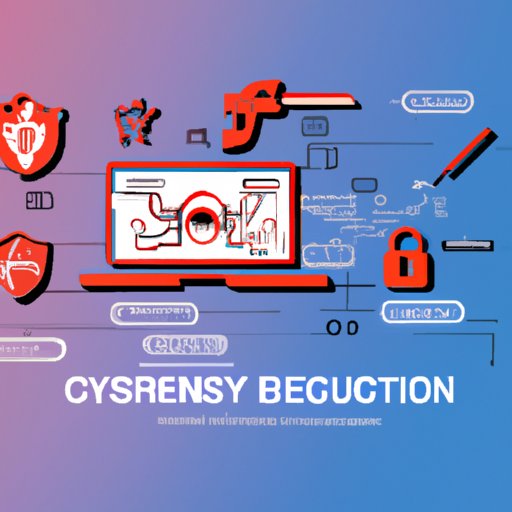Introduction
Cybersecurity refers to the practice of protecting networks, programs and data from unauthorized access, destruction or alteration. As technology becomes more sophisticated, the need for effective cybersecurity measures grows ever more pressing. In recent years, the number of cyberattacks has risen significantly, making it essential for businesses, organizations and individuals to understand the basics of cybersecurity.
Overview of the Current State of Cybersecurity
Cybercrime is on the rise, and the financial and reputational damage it can cause is significant. According to a study conducted by IBM Security, the average cost of a data breach is $3.86 million, up 6.4% from the previous year. Moreover, the Ponemon Institute estimates that the average time to identify and contain a data breach is 279 days, with a further 66 days required to return to normal operations.
Examples of recent cyberattacks include the WannaCry ransomware attack which affected 200,000 computers in 150 countries, the Equifax data breach which exposed the personal information of 147 million people, and the Uber data breach which compromised the data of 57 million users. The impact of such attacks on businesses, organizations and individuals can be devastating.
Types of Cyber Threats
Cyberattacks come in many forms, including malware, phishing, social engineering, denial of service attacks, data breaches, and password cracking. Malware is malicious software designed to disrupt or gain access to a computer system without the user’s knowledge. Phishing involves sending emails or other messages that appear to be from a legitimate source in order to obtain sensitive information such as usernames, passwords or credit card details. Social engineering utilizes psychological techniques to manipulate people into revealing confidential information. Denial of service attacks overwhelm a website or server with requests, preventing it from functioning properly. Data breaches occur when sensitive data is accessed without authorization. Password cracking involves using specialized software to guess passwords.
There are a number of ways to prevent these types of cyber threats. These include using strong passwords, keeping software up to date, running regular backups, using antivirus software, and educating employees about cybersecurity best practices.

Latest Trends in Cybersecurity Technology
Artificial intelligence (AI) is becoming increasingly important in the field of cybersecurity. AI-powered systems can detect and respond to cyber threats in real time, allowing businesses to stay ahead of attackers. Machine learning is another powerful tool used in cybersecurity, allowing systems to learn from past behaviors and better identify potential threats. Blockchain technology is also being utilized to help secure data and prevent unauthorized access.
These developments have significant implications for businesses. AI and machine learning allow companies to automate security processes and reduce their reliance on manual processes. Blockchain technology provides a secure and immutable way to store data. All of these technologies can help businesses protect themselves against cyber threats.
Ethical Considerations of Cybersecurity
In addition to the technical aspects of cybersecurity, there are also ethical considerations. Companies have a responsibility to protect their users’ data and ensure that it is not misused. There are also privacy concerns, as companies must ensure they do not collect more data than is necessary. Finally, companies must ensure they comply with any relevant laws and regulations regarding the protection of user data.
Conclusion
To summarize, understanding cybersecurity is essential in today’s digital world. Cybercrime is increasing and can cause significant financial and reputational damage. There are various types of cyber threats, including malware, phishing, social engineering, denial of service attacks, data breaches, and password cracking. The latest trends in cybersecurity technology include AI, machine learning and blockchain technology, all of which have implications for businesses. Finally, there are ethical considerations that must be taken into account when dealing with user data.
In conclusion, it is clear that understanding cybersecurity is essential in order to protect businesses, organizations and individuals from the potential damage caused by cybercrime. Taking the necessary steps to secure networks, systems and data will help to ensure that businesses remain protected and compliant.
(Note: Is this article not meeting your expectations? Do you have knowledge or insights to share? Unlock new opportunities and expand your reach by joining our authors team. Click Registration to join us and share your expertise with our readers.)
